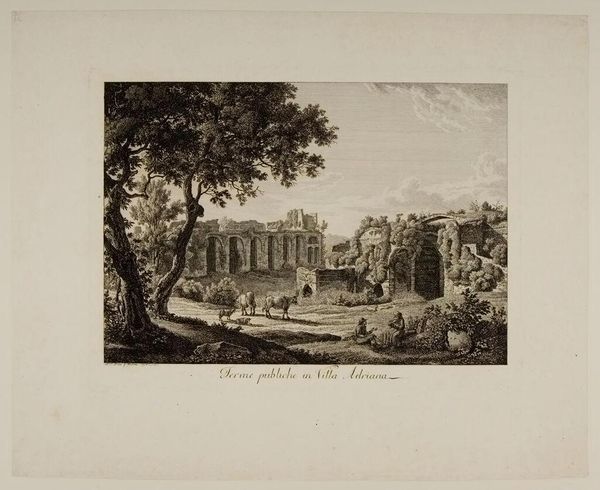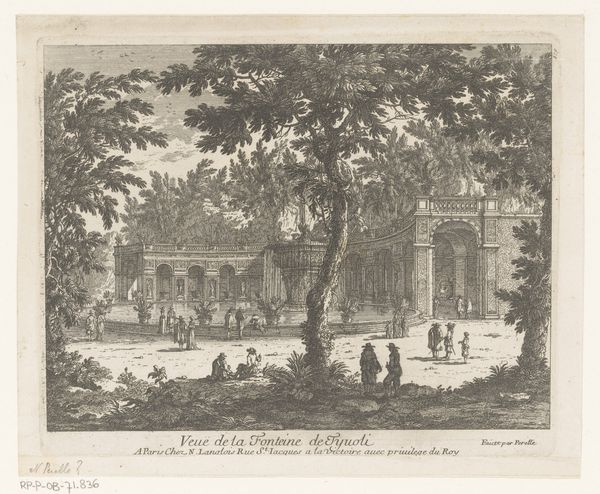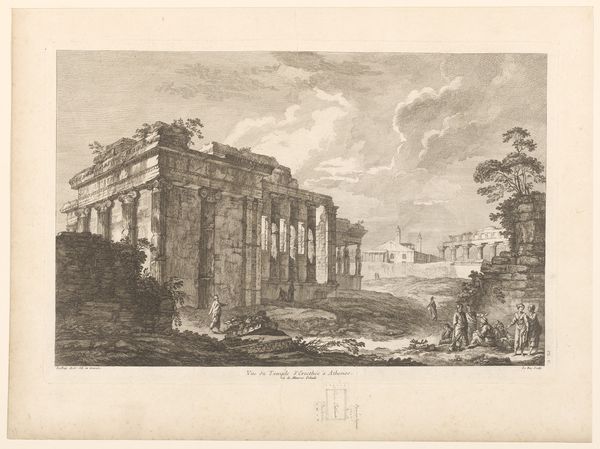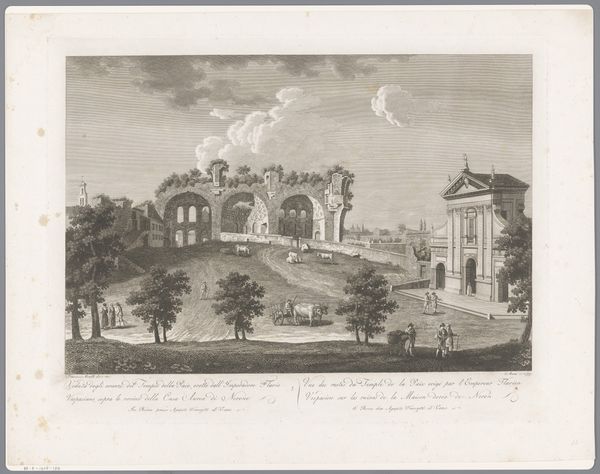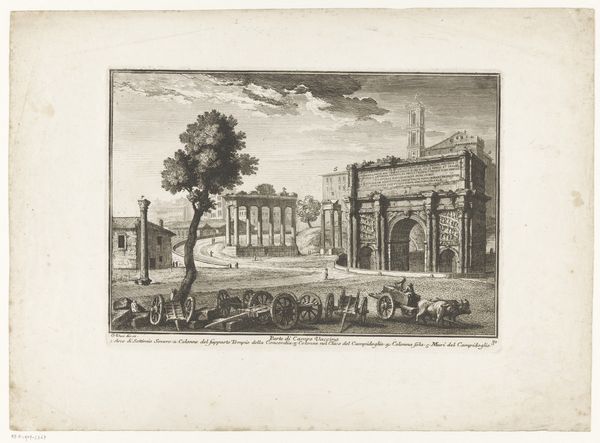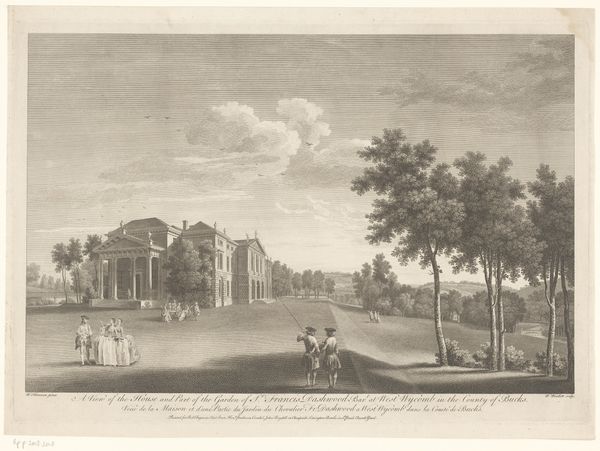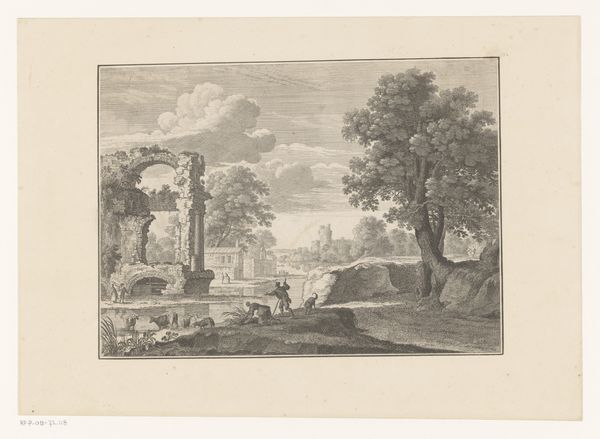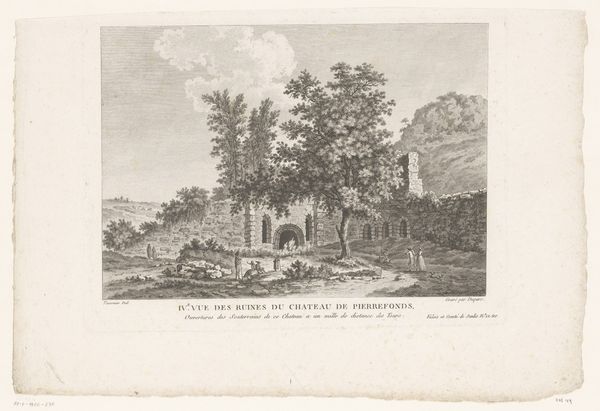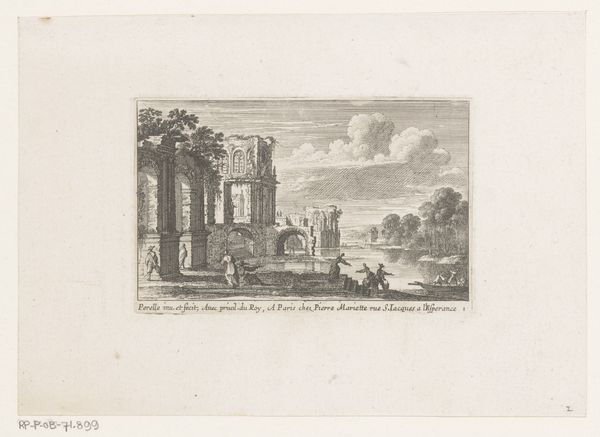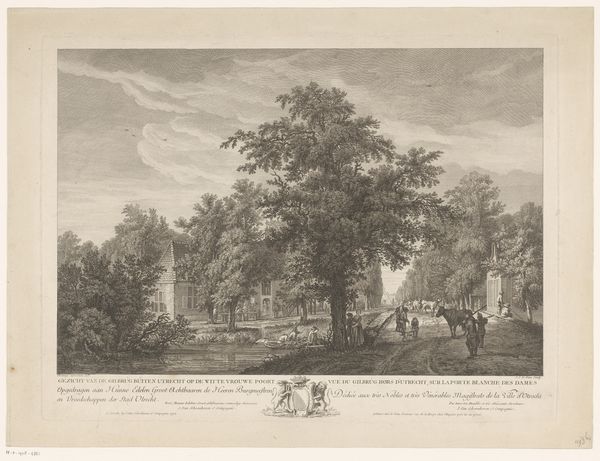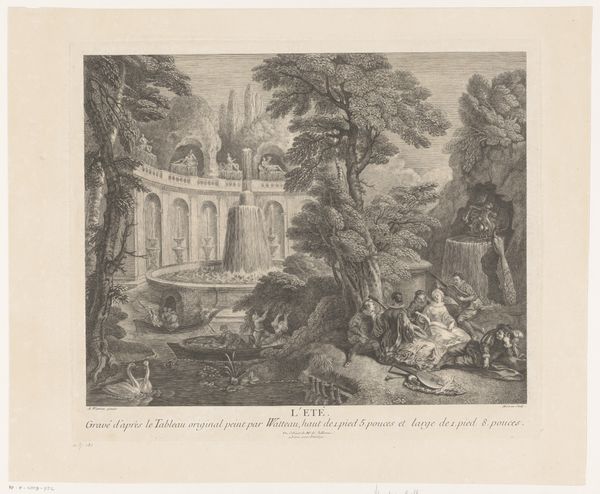
print, etching, engraving
#
neoclacissism
# print
#
etching
#
landscape
#
cityscape
#
history-painting
#
engraving
Dimensions: plate: 28.1 x 37.9 cm (11 1/16 x 14 15/16 in.) sheet: 39 x 49 cm (15 3/8 x 19 5/16 in.)
Copyright: National Gallery of Art: CC0 1.0
Albert Christoph Dies created this print of the Hadrian's Villa’s public baths using etching, a printmaking technique where lines are incised into a metal plate with acid. The process begins with applying a waxy, acid-resistant ground to a metal plate, then scratching away the ground to expose the metal. The plate is submerged in acid, which bites into the exposed lines, creating grooves. Ink is applied to the plate, filling the etched lines, and the surface is wiped clean. Finally, the plate is pressed onto paper, transferring the ink and creating the print. The fine lines and subtle gradations of tone that Dies achieved through the controlled use of acid is remarkable. The etching process allows for a level of detail that would be difficult to achieve through other means. Consider the labor involved, not only in Dies’s studio, but also in the history of labor, extraction, and skill behind metalwork. This print is not just an image, but a document of a complex interplay of materials, making, and social context.
Comments
No comments
Be the first to comment and join the conversation on the ultimate creative platform.
